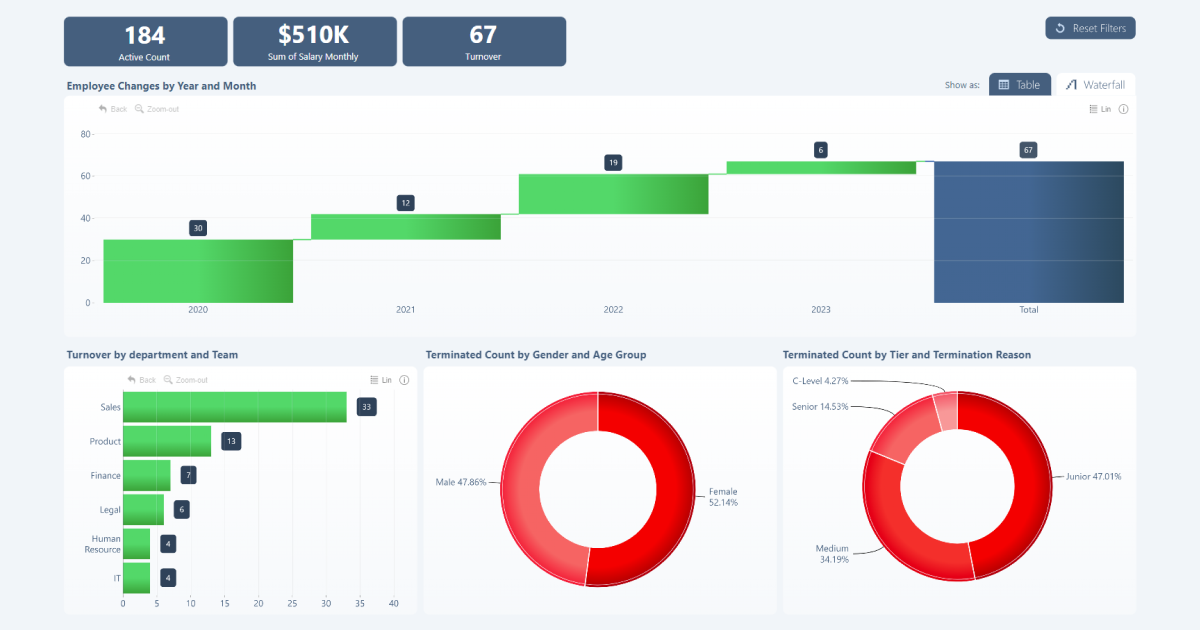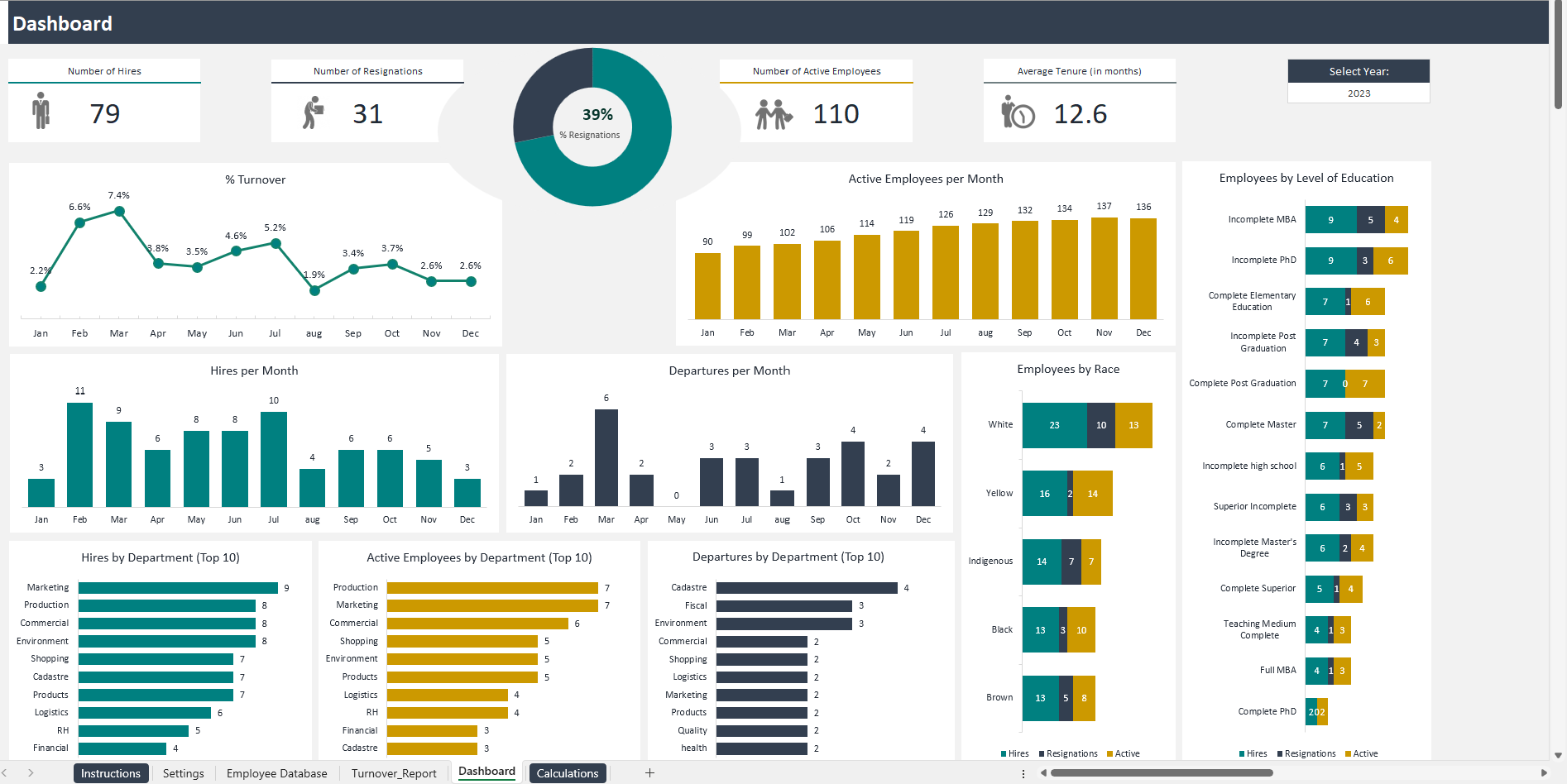Employee Turnover Insights: Understanding the Causes and Solutions
Employee turnover is one of the most critical metrics that every business must monitor. High employee turnover can be a major challenge for organizations, resulting in a loss of talent, productivity, and overall organizational performance. Understanding employee turnover insights helps you identify the reasons behind this issue and take proactive measures to reduce its impact. In this article, we will dive into the causes of employee turnover, its consequences, and the steps you can take to improve employee retention.

What is Employee Turnover?
Employee turnover refers to the process of employees leaving an organization, either voluntarily or involuntarily. This includes resignations, retirements, terminations, and layoffs. The turnover rate is often calculated as a percentage of employees who leave within a specific period, such as monthly, quarterly, or annually.
Why Does Employee Turnover Matter?
Employee turnover matters because it directly affects an organization’s performance, morale, and overall success. High turnover can lead to increased recruitment costs, loss of company knowledge, and decreased employee engagement. By understanding the turnover rate and its underlying causes, businesses can take measures to mitigate its effects.
Causes of Employee Turnover
Understanding the causes of employee turnover is crucial for businesses looking to reduce this problem. There are several common reasons why employees leave an organization, which can be broadly categorized as follows:
1. Lack of Career Growth Opportunities
Employees often leave when they feel there is little room for advancement in their careers. If employees perceive that there is no opportunity for development, growth, or promotions, they may look elsewhere for better opportunities.
2. Poor Company Culture
A toxic or unsupportive workplace culture is a significant factor in high turnover. If employees don’t feel valued, respected, or aligned with the company’s values, they may seek a better fit in another organization.
3. Inadequate Compensation and Benefits
Employees are likely to leave if they feel they are not being fairly compensated for their work. This could include not just salary but also bonuses, healthcare benefits, and other perks. If employees find better compensation elsewhere, they may be tempted to make a move.
4. Lack of Work-Life Balance
Employees who struggle to balance their work and personal life may experience burnout, leading to turnover. Flexible work arrangements, such as remote work options or flexible hours, can help mitigate this issue.
5. Poor Management Practices
Managers play a crucial role in employee retention. Poor leadership, lack of communication, or micromanagement can cause frustration and dissatisfaction among employees, leading to higher turnover rates.
6. Job Misalignment
Sometimes, employees realize that the job they were hired for doesn’t match their expectations or skill set. When employees feel mismatched with their roles, they may look for a position that better aligns with their skills and aspirations.
Consequences of High Employee Turnover
High employee turnover can have severe consequences for organizations. Below are some of the most significant impacts:
1. Increased Recruitment and Training Costs
When employees leave, organizations must spend time and money recruiting, hiring, and training new employees. This can be expensive and time-consuming, particularly in industries with high turnover rates.
2. Loss of Knowledge and Expertise
Long-term employees often carry valuable institutional knowledge. When they leave, organizations lose this knowledge, which can affect productivity and decision-making processes.
3. Decline in Employee Morale
When employees witness their colleagues leaving, it can affect their own morale. This can lead to decreased motivation and productivity, further exacerbating turnover problems.
4. Reduced Customer Satisfaction
High turnover often results in inexperienced staff handling customer interactions, which can lead to mistakes and poor customer service. This can harm the company’s reputation and result in customer dissatisfaction.
5. Lower Productivity
Frequent turnover disrupts team dynamics, creates learning curves for new employees, and generally reduces overall productivity. The constant cycle of onboarding and training new hires can slow down workflows.

Strategies for Reducing Employee Turnover
While employee turnover is inevitable to some extent, businesses can take steps to reduce turnover rates and improve retention. Here are some effective strategies:
1. Improve Hiring Practices
Start by hiring the right people who fit well with your company’s culture and values. A rigorous recruitment process ensures that new hires are not only qualified for the role but also align with the company’s long-term goals.
2. Offer Competitive Compensation
Ensure that your employees feel valued by offering competitive salaries and benefits. Regularly review and update compensation packages to remain attractive in the market.
3. Provide Opportunities for Growth
Employees are more likely to stay if they feel they can develop and grow within the company. Offer professional development opportunities such as training programs, mentorship, and a clear career progression path.
4. Foster a Positive Company Culture
Promote a work environment that values respect, inclusion, and open communication. Encourage feedback and make employees feel like they are contributing to the success of the company.
5. Promote Work-Life Balance
Flexible work options are increasingly important to employees. Offering remote work, flexible hours, or paid time off for personal matters can greatly improve employee satisfaction and reduce burnout.
6. Provide Recognition and Rewards
Regularly recognize and reward employees for their hard work. Whether through performance bonuses, public acknowledgment, or small perks, employees who feel appreciated are more likely to remain loyal.
How to Measure Employee Turnover
Measuring employee turnover accurately is crucial for identifying areas that need improvement. Common ways to measure turnover include:
-
Turnover Rate: This is the percentage of employees who leave the company over a certain period. The formula is:
-
Voluntary vs. Involuntary Turnover: Categorize employees by those who leave voluntarily (e.g., resignations) and involuntarily (e.g., terminations, layoffs). This distinction helps you understand whether the turnover is within your control.
-
Exit Interviews: Conducting exit interviews provides valuable insights into why employees are leaving. Use this data to address potential problems within your company.
FAQs About Employee Turnover
What is the average employee turnover rate?
The average employee turnover rate varies by industry. However, a general benchmark is around 15% annually. High turnover rates may indicate underlying issues that need to be addressed.
How can I reduce employee turnover in a remote work environment?
In remote work environments, ensure regular communication, offer virtual team-building activities, provide flexibility, and recognize employees’ hard work. These strategies help reduce isolation and burnout.
How do I improve employee engagement to reduce turnover?
Engaged employees are less likely to leave. To improve engagement, provide meaningful work, promote a supportive work environment, and offer professional development opportunities.
What role does leadership play in employee turnover?
Leadership plays a pivotal role in employee turnover. Poor management practices, lack of communication, and inadequate support from leadership can drive employees to leave. Strong leadership fosters trust, motivation, and job satisfaction, reducing turnover.

Conclusion
Employee turnover is an inevitable part of any organization, but understanding its causes and consequences can help businesses reduce its impact. By implementing strategies such as improving hiring practices, offering competitive compensation, fostering a positive culture, and promoting work-life balance, organizations can retain top talent and ensure long-term success. Monitoring turnover rates and acting on employee feedback is essential to maintaining a stable and productive workforce.
Reducing turnover is not just about saving costs; it’s about building a stronger, more engaged team that will contribute to your company’s growth and success. Actively address the factors that drive turnover, and your organization will reap the rewards of improved retention and greater employee satisfaction.



